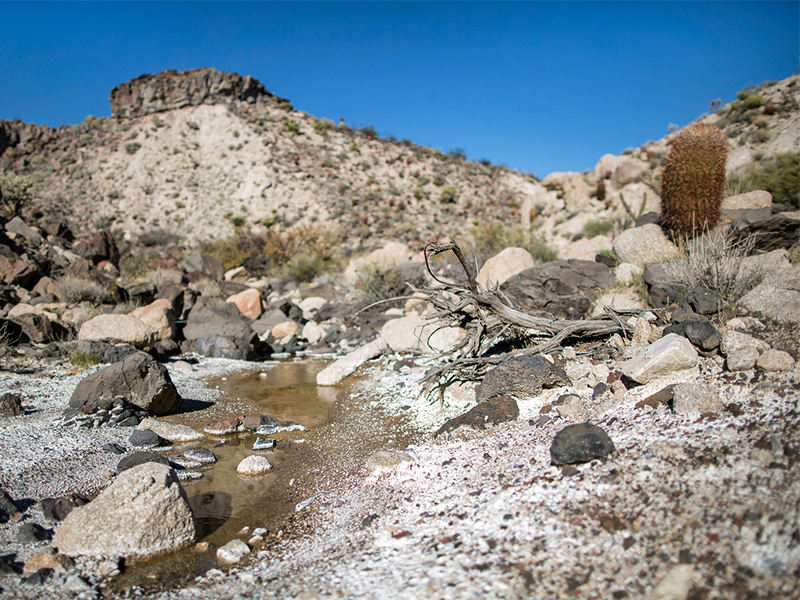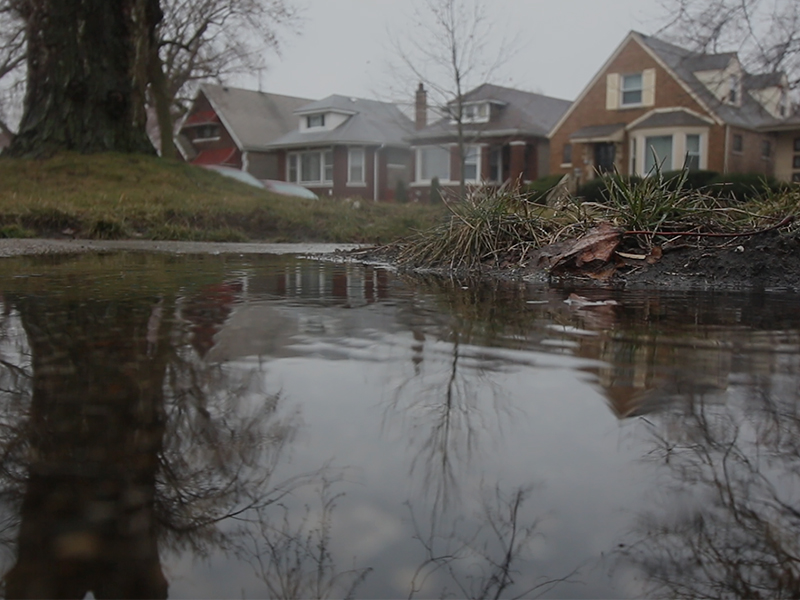The Home by the Shore
As sea levels rise, are coastal communities at risk of extinction?

Nahant, Massachusetts is a rocky crescent moon-shaped piece of land that juts out into the Atlantic Ocean just north of Boston.
For its entire history, it’s been at the mercy of the ocean.
To get to the town, back in the 1800s, you would cross a long beautiful beach at low tide that connected Nahant to the mainland. At high-tide, you had to take a boat. These days there’s a four-lane road built on that beach, and it sits just a few feet above high tide.

"I was the young guy on the block, now I'm the old man on the block," said Dave Lazzaro.
“When the weather’s good in the summer, there’s no prettier, nicer place. We have a private beach, we have a great view. The shipping lanes of Boston come right in front of our house, so all the big ships that come in we can see. And I love it, I love my house,” said Dave Lazzaro, a retired bartender and a wood worker, as he sat in his living room on a windy day in spring.
The house he shares with his wife Chris is full of his carvings -- it’s kind of a comforting nautical clutter. They have lived on Willow Road, in a house that at high tide is a stone’s throw from the water, for nearly 50 years.

Over the past 50 years, Dave and Chris Lazzaro’s home has sustained flood damage a half dozen times.
“I raised a family here,” he said, matter-of-factly.

The dangers of waterfront living
Waterfront property tends to be expensive. More than 120 million people live in coastal counties in the United States -- that’s more than a third of the country.
But most people living by the water know -- you get the beautiful summer days, but also the brutal storms. There are two storms that people who have lived in Nahant for a long time talk about: the Blizzard of 1978, and what everyone here calls the “No-Name Storm” in 1991. If you live anywhere else, you’ve probably heard that second one called the Perfect Storm--they made a movie about it.
“When a storm comes in, the house shakes. You can literally feel it. And when those big waves hit the seawall, you can see movement, see curtains moving,” Dave Lazzaro said. “In the blizzard of ‘78 I had put plywood up over the windows, but when that got knocked in, there was waves carrying four-by-eight sheets of plywood through the living room.”
He said if one of those had hit him or his wife it could have broken bones or dragged them underwater.
As the seas rise, climate scientists predict devastation will become more and more common. Higher seas mean even a less powerful storm could push the tides up over Nahant’s seawalls.
Around the country, as many as 12 million people could be at risk because of sea level rise.
“The unfortunate thing is what we’re really facing in so many of these coastal areas is what we can rightly call an extinction threat,” said Sam Merrill, an engineer with GEI Consultants, an engineering firm that designs coastal infrastructure. “The extinction of a community. We don’t know how to deal with extinction. It’s not really a conversation in our public sphere.”
In the face of such potential change, Merrill says there are three options for action: “fortify, accommodate, and relocate.”
Fortify, accommodate, relocate. In other words, you can brace for things getting worse, you can try to adapt to live with the occasional flood, or you abandon your home and flee.
If this sounds like a simple choice, spend some time in a place like Nahant, where people are facing these choices. When you do, it gets clearer that each of those options is a lot more complicated.

Fortifying your property
Let’s start with fortify -- choosing to stay and fight. In Nahant you can see this just a few doors down from Dave Lazzaro, in Ken Carangelo’s house.

"It’s a choice to live down here, as opposed to the top of the hill," says Ken Carangelo of his decision to live on the water.
He’s single, no kids, and is an executive at a big company in the film industry. He and his neighbors each own a section of an interlocking seawall. Carangelo’s house was built in the ‘90s after the Perfect Storm undermined the old wall. It’s pretty imposing: tall enough that you can’t reach to the top of it from the beach, and even more concrete is buried under the sand.
“Everything that’s down there has a solid footing and kevlar-coated rebar, so the salt doesn’t get to it as much,” Carangelo explained.
He bought this house in 2008, but says the seawall cost the previous owners more than $200,000.

“It’s the equivalent of building a sandcastle,” he said, “and you kind of know what happens after a while. The ocean will do what the ocean’s gonna do. It depends how hard you wanna fight it, I guess.”
Plenty of people in coastal communities believe the federal government should help pay to protect these sandcastles, and that’s true in Nahant too; one local official told me he thinks the Army Corps of Engineers should put a breakwater in Nahant Harbor.
But Sam Merrill, the coastal engineer, says the cost of protection -- especially if you’re trying to protect every building, from every storm, in every community in the country -- could run into the billions every year for a century.
“I don’t think it’s feasible to protect every community,” he said.

Accommodating the waters
So how about accommodating? That second option on our list means trying to live with flooding and find ways to let the water flow in and out without causing too much damage.
In Nahant, they’re trying that too.
Enzo Barile, a local elected official, gave me a tour, pointing out newer houses that have been built to withstand moderate flooding. “Seawalls can only do so much. You’re not going to stop the Atlantic Ocean,” he said.

Enzo Barile looks over federal flood-risk maps for Nahant.
Barile grew up in Nahant. He owns a garage in town and can point out where all the families of mobsters used to live. He says the biggest accommodation Nahant has made is keeping a lot of its low-lying areas out of development. There’s a baseball field, a golf course, and a small bird sanctuary all built into some of the lowest areas of the town.
And there’s even a pond at the low-point of the town’s golf course, and when storms come they put giant bilge pumps in to drain the town, and make room for the water that’s on its way.

In advance of big storms, Nahant pumps out a pond on this low-lying golf course.
“So we actually drain the town down, before we know there’s a major event gonna come, north’easter… we drain it right down,” said Barile.
But despite the seawalls, and the open space, Nahant has some of the worst flooding in Massachusetts. There are only two towns in the state that have received more per capita in federal flood insurance claims.
What’s more, nearly 50 homes in Nahant are places called “repetitive loss properties.” These are buildings that have had more than two major flood insurance claims in the past 10 years -- kind of the definition of having your home in a risky spot. These homes make up something like one percent of all the buildings covered by the flood insurance administered by the Federal Emergency Management Agency (FEMA), but that one percent accounts for nearly 40 percent of the claims.
Even Enzo Barile--a lifelong Nahanter--thinks there’s a point after which you shouldn’t get paid to rebuild a home in a spot like this.
“Where do we draw the line? I don’t know,” Barile began. “Personally I think that once FEMA has paid you, if they’ve paid for your home and you’ve lost it, because it’s in a ridiculous spot... enough’s enough. We have just to say no, because the country is paying for that now.”

Moving away from the water
This brings us to relocation -- just move. That third option on our list -- maybe more than the others -- seems so simple as a hypothetical. But in real life, it’s not even close.
Consider Dave Lazzaro, the retired bartender who likes watching the ships go by. His home on Willow Road has been flooded six times over the past 40-some years. He doesn’t question that the seas are rising.

A doorbell at Dave Lazzaro’s house. He said the house could fund his retirement.
“Storms are getting more intense and there are places where once you can live, that now you can’t live. I don’t think of Willow Road that way,” he said.
And that’s the thing; Nobody thinks this way about their own home. Even if logically they know the odds, which Dave does.
“Is this house going to be safe in the next 25 years?” he said. “I don’t know about that, because those storms that come in, if you’re in the path, you’re in trouble.”
When you’re talking about other people’s houses by the sea, and how risky those are, it’s much easier to distance yourself and look at the facts. When it’s your home, the view gets blurrier.
This is where flood insurance comes in. The price that people pay should be an indicator--a clue--that sooner rather than later, you will be in trouble.
I asked Dave and Chris if they would be willing to take the risk of living in their home without flood insurance. Dave immediately answered, “No.” After a short pause, Chris said, “Yes.”

Dave and Chris Lazzaro's flood insurance rates have been rising for years, but they disagree about whether they would risk living in their home without insurance.
Even in one household, figuring out where and when to draw the line is complicated, and the signal of risk that flood insurance sends gets all mixed up in your love for your home.
And that risk signal gets more muddled when federal flood insurance subsidies don’t reflect the true risk of living in these sorts of flood zones.
Many older, riskier properties covered by federal flood insurance are grandfathered into artificially low rates. For example, after Hurricanes Katrina and Sandy left the federal flood insurance program $23 billion dollars in debt and Congress tried to raise those rates, coastal property owners reacted immediately, filling their representatives’ inboxes and voicemails with complaints
Members of Congress, like then-Louisiana Sen. Mary Landrieu, fought in 2013 to keep the subsidies.
“This is a major bill that passed without the data necessary to use either compassion or common sense,” she railed in a committee hearing at the time.
Less than two years after the change was passed, Congress watered it down: delaying some rate increases, and eliminating others.
This means, while insurance rates are rising for coastal residents, it could take another ten to fifteen years before many of them are paying what the private industry would consider a rate that truly reflects their risk.
So there is no clear message telling coastal homeowners whether they should relocate, at least not through the rates.
Sam Merrill, the coastal engineer with GEI Consultants, thinks that without some sort of action, eventually many homeowners will be left holding the bag when their homes simply cease to be worth anything, or their homes are swept away.
Like millions of Americans in coastal areas, homeowners in Nahant have a really tough decision in front of them. Fight nature or give up your home. What you realize spending time in a place like Nahant is that none of their options are appealing… or simple… or cheap. It’s the kind of situation that leads people to put off a real decision.
But for people, like those in Nahant who are struggling, there’s also a deadline coming. It might not arrive suddenly, but it will arrive inevitably.
And arrive in a way that will force the hand of people in this community and millions of other people just like them all over the world.






 to WBEZ
to WBEZ
